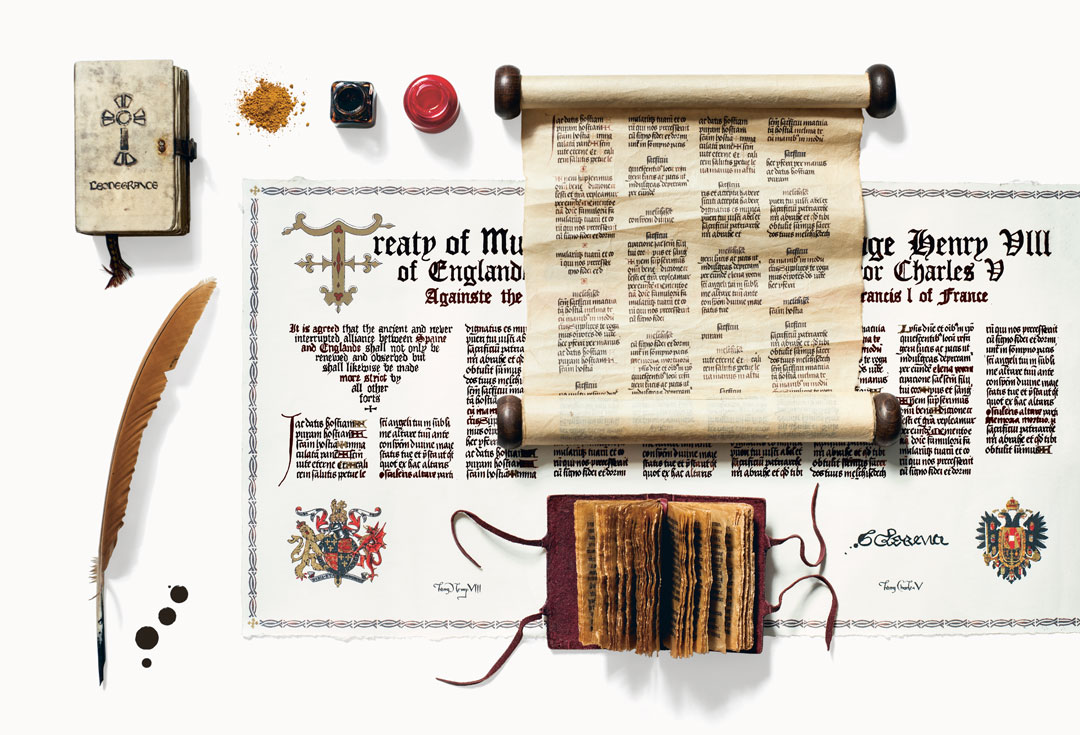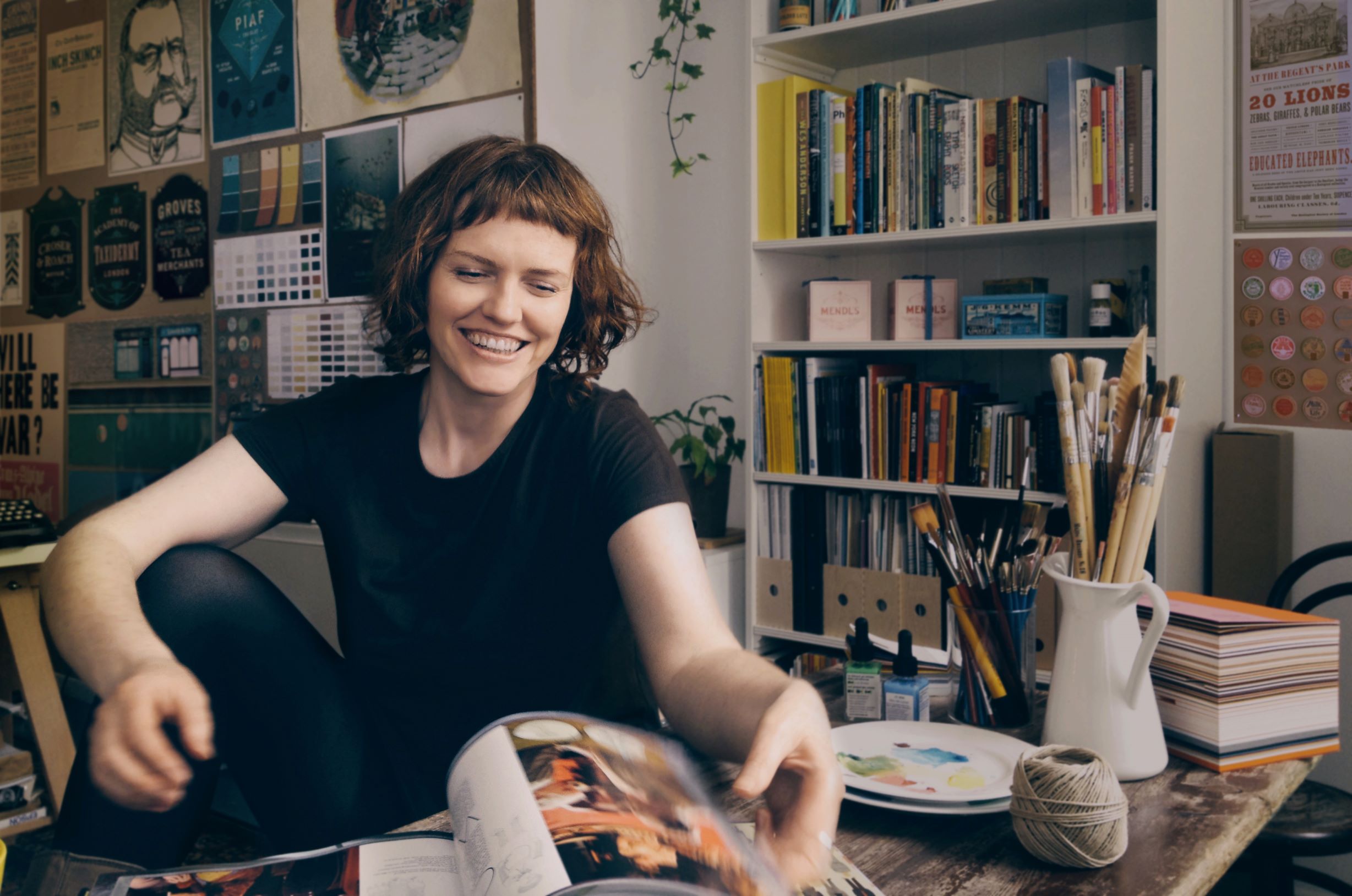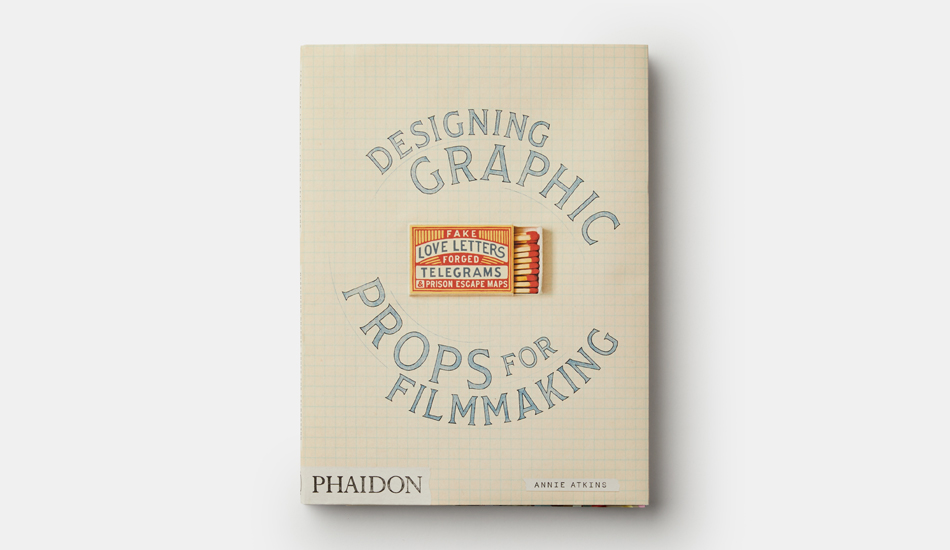
When Annie Atkins faked Royal love letters
The designer's on-screen letters not only required skilful calligraphy, they also called for a little bit of costume work
Annie Atkins’ has made some of the most impressive designs in recent cinema history; from the Mendl's cake boxes in The Grand Budapest Hotel, through to the faked documents in Bridge of Spies. In most instances this hugely successful graphic designer works hard to ensure her props look perfect. However, in other instances, she passes her duties over to another safe pair of hands - quite literally in the case of the letter-writing scenes she oversaw for the The Tudors, the historical drama focussing on the reign of the 16th century monarch, King Henry VIII.
To ensure The Tudors’ letters looked right, Akins drafted in skilled hand doubles. Finding the right person for such a role can be tricky, Atkins explains in her new book, Fake Love Letters, Forged Telegrams, and Prison Escape Maps: Designing Graphic Props for Filmmaking: “Not only do they have to be fluent in the various letterforms of the period, but their hands also need to be of the right gender, age, and skin tone,” she writes.

Employing an additional pair of hands just to write a letter on screen might sound bizarre, “especially when we often hear about actors performing all their own sex scenes and horse-based stunts, but passing as a professional scribe in close-up can sometimes be a more complex undertaking,” she writes.
Over the course of the show, Aktins found herself relying on the Irish calligrapher Gareth Colgan for many letter-writing scenes, whose hands (male, white, mid-thirties) could pass for a variety of characters, and who was also familiar with a wide variety of styles common in the Tudor era.
“He has practiced calligraphy since he was 14-years-old, working as both a scribe and a letter carver in Cambridge, England, and he could often be seen reading some kind of heavy volume on the history of paleography [the study of ancient handwriting] while waiting for his call to set,” Atkins explains.
But, the wilder, teenaged, female letters of Katherine Howard required a different pair of hands; Howard is thought by some historians to have been illiterate. However, the girl’s letter writing remains important, as one love letter she sent to her alleged boyfriend, Thomas Culpeper, is thought to have been used as evidence when sentencing her to death in 1541.

Aktins found her on-camera double in the show’s art-department trainee Megan Breslin, who, despite having relatively neat handwriting, was able to lay down a more frantic scrawl, thanks in part to two contributing factors: “One, she wrote the letter with her right hand instead of her usual left, and two, she was so nervous that as soon as she was in costume and taken to set, her hands began to shake uncontrollably.”
Thanks right, in costume, or rather ‘half costume’ as Atkins explains. “The wardrobe department supplies all hand doubles with the jacket and shirt of the actor they’re to stand in for—as well as any kind of large feathered hat that might dangle into shot somehow— so that their cuffs are identical on camera.”
They might be in jeans and trainers below the waist, yet Atkins and co ensured that both the documents they made, and the parts visible on screen would all look sufficiently antique to pass for Tudor England.
To see more of the works Aktins has made for the screen, and to learn more about her working practices, order a copy of Fake Love Letters, Forged Telegrams, and Prison Escape Maps: Designing Graphic Props for Filmmaking here.